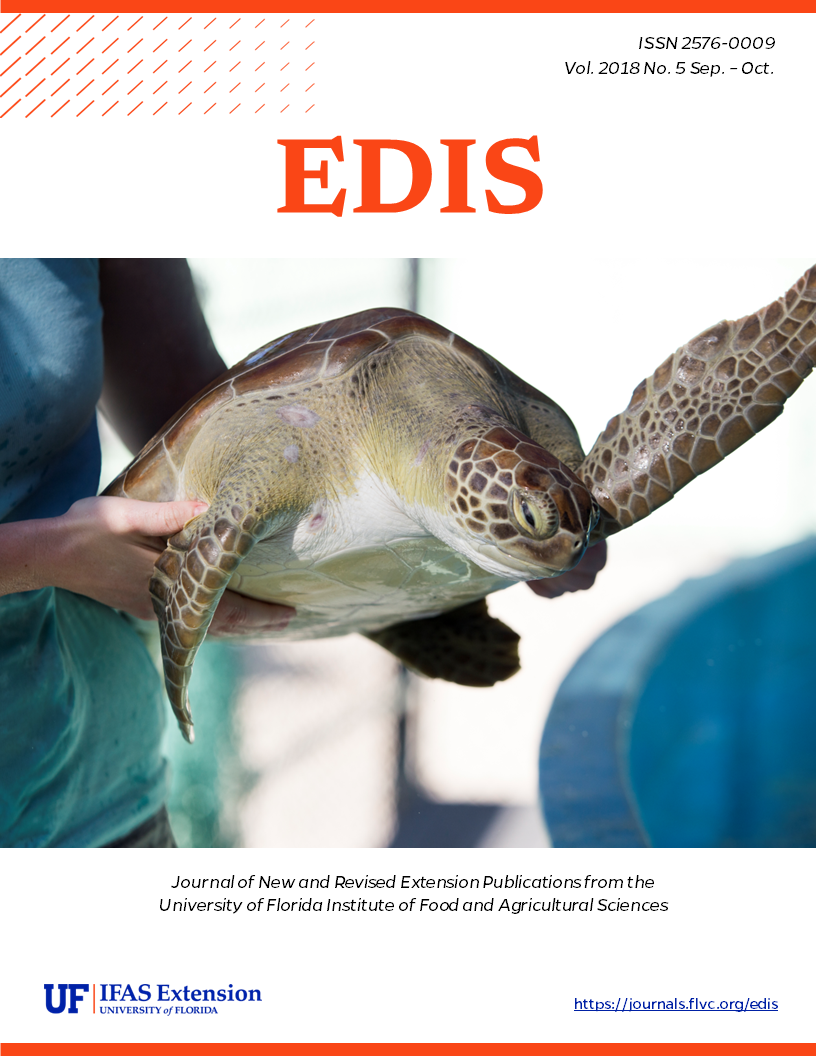Abstract
Sea oats occur throughout Florida on beach dunes and beaches and on coastal areas west to Texas and north to Maryland. Sea oats are vital dune builders that accumulate sand and prevent erosion due to wind, waves, and large storms. As sand is trapped by the long leaves of sea oats, vertical growth is stimulated, and rooting occurs at the buried nodes. This plant is extremely drought- and salt-tolerant, grows up to the high tide line of beaches, and propagates both vegetatively and by seed in the wild (Shadow 2007).
https://edis.ifas.ufl.edu/sg186
This publication is derived from information in SGEB-75/SG156, Dune Restoration and Enhancement for the Florida Panhandle, by Debbie Miller, Mack Thetford, Christina Verlinde, Gabriel Campbell, and Ashlynn Smith. https://edis.ifas.ufl.edu/sg156.
References
Bachman, G.R., and T. Whitwell. 1995. "Nursery production of Uniola paniculata (southern seaoats)." HortTechnology 5(4)295:298 http://horttech.ashspublications.org/content/5/4/295.full.pdf https://doi.org/10.21273/HORTTECH.5.4.295
Burgess, T., F. Blazich, and D. Nash. 2002. "Seed germination of southern seaoats (Uniola paniculata) as influenced by stratification, temperature, and light." Journal of Environmental Horticulture 20(3):180-183. https://doi.org/10.24266/0738-2898-20.3.180
Hooton, N., D.L. Miller, M. Thetford, and S.B. Claypool. 2014. "Survival and growth of planted Uniola paniculata and dune building using surrogate wrack on Perdido Key Florida, USA." Restoration Ecology 22(5):701-707. https://doi.org/10.1111/rec.12129
Stoddard, M., D.L. Miller, L.C. Branch, and M. Thetford. 2014. "Endangered beach mouse: Linking population studies/habitat restoration to predict sea level rise." Final Report submitted to Gulf Islands National Seashore, Gulf Coast Cooperative Ecosystems Studies Unit Project H5000 02 A271. 130 p.
Miller, D.L., M. Thetford, and L. Yager, 2001. "Evaluation of sand fence and vegetation for dune building following overwash by Hurricane Opal on Santa Rosa Island, Florida." Journal of Coastal Research 17(4):936-948.
Miller, D.L., L. Yager, M. Thetford, and M. Schneider. 2003. "Potential use of Uniola paniculata rhizome fragments for dune restoration." Restoration Ecology 11(3):359-369. https://doi.org/10.1046/j.1526-100X.2003.00006.x
Nabukalu, P., and C. Knott. 2013. "Effects of seed storage environment on sea oats (Uniola paniculata)." Ecological Restoration 31(1):16-19. https://doi.org/10.3368/er.31.1.16
Pérez, H.E., and M.E. Kane. 2016. "Different plant provenance same seed tolerance to abiotic stress: implications for ex situ germplasm conservation of a widely distributed coastal dune grass (Uniola paniculata L.)." Plant Growth Regulation 82(1):123-137. https://doi.org/10.1007/s10725-016-0244-1
Senaca, E.D. 1972. "Germination and seedling response of Atlantic and Gulf Coast populations of Uniola paniculata." American Journal of Botany 59(3):290-296. https://doi.org/10.1002/j.1537-2197.1972.tb10095.x
Shadow, R. 2007. "Plant fact sheet for sea oats (Uniola paniculata L.)." USDA NRCS, East Texas Plant Material Center. United States Department of Agriculture (USDA) Natural Resource Conservation Service (NRCS). 2017. The PLANTS Database. https://plants.usda.gov/factsheet/pdf/fs_unpa.pdf
Sylvia, D. M. 1989. "Vesiculararbuscular mycorrhizal fungi associated with Uniola paniculata in Florida foredunes." Mycological Society of America 78(5):728-734. https://doi.org/10.1080/00275514.1986.12025316
Sylvia, D.M. 1988. "Selection of a Vesicular arbuscular fungus for practical inoculation of Uniola paniculata." Mycologia 80(4):565-568. https://doi.org/10.1080/00275514.1988.12025579
Unless otherwise specified, articles published in the EDIS journal after January 1, 2024 are licensed under a Creative Commons Attribution-NonCommercial-NoDerivs 4.0 International (CC BY-NC-ND 4.0) license.

